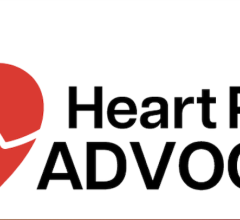
Image courtesy of Intermountain Medical Center Heart Institute
May 11, 2018 — A new study finds that integrating two separate clinical risk score models more accurately helps clinicians assess the stroke risk of patients with atrial fibrillation (Afib).
The composite stroke decision tool studied by researchers from the Intermountain Medical Center Heart Institute in Salt Lake City combines the widely used CHA2DS2-VASc with the Intermountain Risk Scores (IMRS) to derive and validate new stroke prediction scores. The study shows the new model, IMRS-VASc, was significantly more effective in predicting stroke risk, and will give clinicians a more effective and accurate tool to assess patients with cardiovascular disease.
Atrial fibrillation, the most common heart arrhythmia in the world, affects more than 2.7 million American adults. The abnormal heart rhythm causes blood to pool and clot in the heart, and when those blood clots break free, they can cause a stroke.
Researchers found the new IMRS-VASc risk score model nearly doubles their ability to appropriately predict stroke risk compared to the traditional CHA2DS2-VASc risk tool. The development of the IMRS-VASc risk score model is the first step in a research pathway for other conditions that will ultimately result in time and cost savings for both patient and physician.
Researchers will present results from the study at the Heart Rhythm Society’s 39th annual Scientific Sessions, May 9-12 in Boston.
This improved effectiveness of the new risk score model results from better assignment of low-risk and high-risk people to the appropriate stroke prognosis category, said Benjamin Horne, Ph.D., lead author of the study and director of cardiovascular and genetic epidemiology of the Intermountain Medical Center Heart Institute.
He notes that the CHA2DS2-VASc score places about 80 percent of women and 50 percent of men with atrial fibrillation in a group of people at high risk of stroke. In contrast, IMRS-VASc places one third of all people each in a low, moderate and high-risk category.
Additionally, the study found that IMRS-VASc more appropriately assigns people to the risk group that relates to their actual prognosis. Study results showed a lower rate of stroke in the low-risk group (about 1 percent having a stroke over a two-year period for women and men), and a higher rate in the high-risk category (two-year stroke rates of 6 percent in women, 5 percent in men).
This improved effectiveness may help limit near-term use of atrial fibrillation treatments among people who do not yet need the therapies, and reinforce and encourage the use of treatments among those whose short-term risk actually is high, Horne said.
“We provide information to clinicians so they can make better decisions about who should have oral anticoagulants and who should have other types of medications and diagnostics tests, and which patients need to have more frequent clinic visits,” said Horne. “The result will be care that can be more precisely targeted to each patient’s risks and more likely to prevent a stroke.”
Horne said the integrated IMRS-VASc model combines tried-and-true attributes of the CHA2DS2-VASc and the IMRS.
“While the CHA2DS2-VASc is easy to use, it does not reliably predict what will happen in the future. The Intermountain Risk Score incorporates data available to clinicians in the electronic health record to calculate a score that predicts what’s going to happen in the future and the two combined result in IMRS-VASc Models,” he noted.
The CHA2DS2-VASc score is a mnemonic that’s easy and convenient for clinicians to use. Each of the letters and the numbers reflect a characteristic that’s used in the score:
- The C is for congestive heart failure (CHF);
- The H is for hypertension;
- The A is for age;
- D is for diabetes;
- S is for history of stroke;
- V is for vascular disease;
- The second A is for threshold for age;
- The final S is for sex;
- The A and S have a 2 by them. Each of these components gets one additional point for each additional risk factor. If you have congestive heart failure you get one point. If you have hypertension you get one. If you’re above age 75 you get 2 points, and the S2 means if you have a history of stroke you get 2 points, and subsequently, all the others get 1 point; and
- The second A is for age between 65 to 74, which adds one point.
For the observational study, researchers collected existing data from patients who visited an Intermountain Healthcare clinic from 1990 to 2013. There were 56,000 individuals evaluated in the study to create the score.
Another set of 24,000 patients were then tested after the new combined risk score was created to validate that it worked in a separate set of individuals who hadn’t been involved in the creation of the risk score.
The takeaway for patients from the study is more personalized care from clinicians, Horne said.
“We’re working to precisely determine what medications are needed and what tests need to be ordered, so care is tailored to the patient’s specific individual needs,” he said.
Other members of the research team included Heidi T. May, Ph.D.; Victoria Jacobs, Ph.D.; Kevin G. Graves; and T. Jared Burch, M.D.
For more information: www.hrssessions.org


 March 31, 2025
March 31, 2025 







